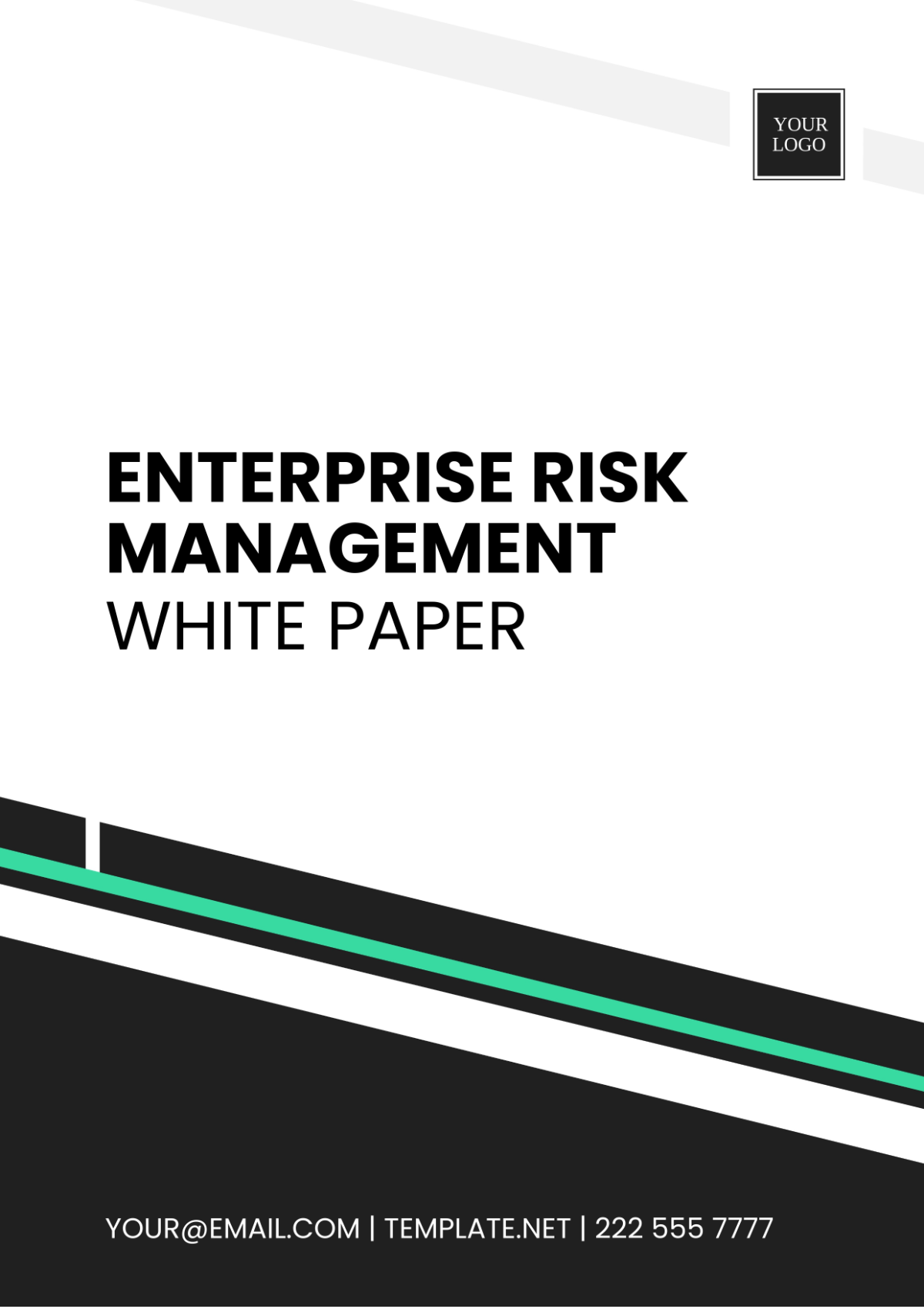Free Enterprise Risk Management White Paper

I. Introduction

This White Paper explores the intricacies of Enterprise Risk Management (ERM) and its pivotal role in corporate governance. Addressing the common applications and foundational purpose of ERM, this document will serve as a comprehensive guide for [YOUR COMPANY NAME] in cultivating resilience and maximizing value through informed decision-making.
II. Common Use Cases
ERM is a crucial framework used by organizations across various industries to manage and mitigate risks. Herein is how ERM addresses different types of risks:
A. Financial Risks
Companies like [EXAMPLE COMPANY NAME] leverage ERM to forecast and mitigate financial uncertainties, thereby safeguarding assets and optimizing financial performance.
B. Operational Risks
Operational disruptions are minimized at [EXAMPLE COMPANY NAME] through predictive ERM strategies that enhance operational continuity.
C. Strategic Risks
ERM frameworks guide [EXAMPLE COMPANY NAME] in aligning risk appetite with strategic goals, ensuring sustainable growth.
D. Compliance Risks
To comply with ever-evolving regulatory requirements, [EXAMPLE COMPANY NAME] embeds ERM processes to avoid legal pitfalls and fines.
These use cases illustrate that proactive risk management not only safeguards against threats but also creates significant business value by ensuring more predictable and optimized outcomes.
III. Purpose and Benefits

The fundamental goal of ERM is to equip [YOUR COMPANY NAME] with the capability to manage uncertainty and associated risks effectively, enhancing both short-term and long-term performance. Detailed below is the dual focus of ERM implementation:
Improving Decision-Making: ERM provides a holistic view of potential risks and their impacts, enabling [YOUR DEPARTMENT] to make informed strategic decisions.
Optimizing Resource Allocation: By identifying and assessing risks, ERM ensures that resources are employed judiciously to mitigate high-priority risks, thereby enhancing resilience.
Ensuring Long-Term Sustainability: Through continuous risk assessment and adaptation, ERM helps [YOUR COMPANY NAME] to navigate the evolving market and regulatory landscapes, securing its long-term viability.
Thus, the strategic application of ERM is instrumental in achieving organizational objectives by managing and mitigating risks effectively.
IV. Conclusion
In conclusion, Enterprise Risk Management serves as a cornerstone of strategic governance for [YOUR COMPANY NAME]. Through its systematic approach to identifying, assessing, and mitigating risks, ERM not only protects but also enhances value across the enterprise. As outlined in this White Paper, deploying ERM frameworks can transform potential threats into opportunities for growth and innovation, ensuring sustainability and prosperity in a competitive business environment.
For tailored advice on integrating ERM into your strategic planning, contact [YOUR NAME] at [YOUR COMPANY EMAIL].
- 100% Customizable, free editor
- Access 1 Million+ Templates, photo’s & graphics
- Download or share as a template
- Click and replace photos, graphics, text, backgrounds
- Resize, crop, AI write & more
- Access advanced editor
Unlock the power of risk resilience with Template.net's Enterprise Risk Management White Paper Template. Crafted for adaptability, this editable and customizable template empowers you to tailor your risk management strategy effortlessly. Seamlessly edit in our Ai Editor Tool and transform your insights into actionable plans. Elevate your risk management with Template.net.





























